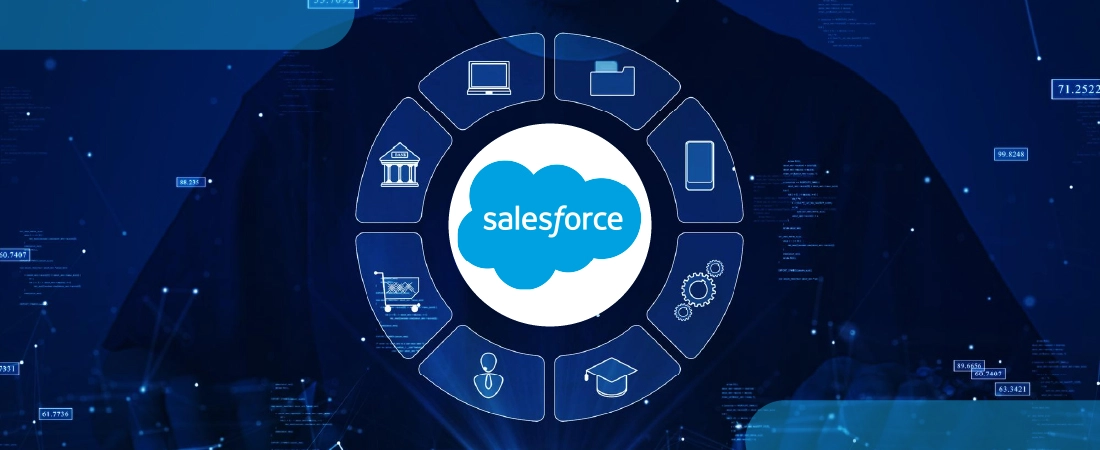Ordinarily, most K-12 and higher-ed school processes categorize into one of five classes. Irrespective of denominations like private, public, and charter these are Recruitment, Admissions, Student Success, Alumni Management, and Fundraising. Up until now, schools would use legacy SIS setups like Powerschool or ‘Raiser’s Edge’ to navigate through these.
Per experience, a pitfall of these antiquated was that they’d introduce detached arrangements required to manage different school processes. Mailing lists were put together manually; interventions went untraced, and rigid excel sheets would contain more data than all other databases put together every school year.
Naturally, shortcomings such as these, the future of work, and pressures of ensuring a four-year college track, necessitated streamlining processes for the entire student lifecycle. An education cloud, like the one announced by Salesforce on the Higher Ed Summit of April 16-17, addresses just that.
Here’s a scoop on 12 of its best highlights.
12 Reasons the Education Cloud is a system of choice for K12 and Higher-ed
1. Un-silo data for Effective management
Institutions can handle prospective student tracking, as well as put forward new educational offerings with the same system.
It would also open them up to more student accessibility and centralization into a responsive, organization-wide DB.
An economical choice if the schools or institutes are part of a group.
2. Marketing, Pledge and Gift Automation
You don’t have to collate info from various systems every time you need to send out emails and e-vites or manage event logistics.
Now, manage fundraising efforts by creating the next step action items on a mobile platform without going back to the office to access the SIS.
Also, the gift entry manager (GEM) allows for active donor engagement and cultivation through flexible pledge and gifting management.
3. Donor Insights
Now, collate relevant information such as activity history, giving history, programs and events attended, and any other custom information. Get insights from on multiple platforms, so you always know what donors like.
In support of this, you can manage calendar events, track down donors for RSVPs and seating arrangements, and generate reports to save time and stay within grants.
4. Configurable Dashboard metrics - Drive Competition with hard numbers
Drive competition between grade-level volunteer fund-raisers through dashboard views of team-wise donor activity.
5. Collaboration and Alumni Tracking
Notice what your former students are up to, and help them stay in touch with their alma mater. Besides that, get data on success after graduation to understand what works. Engage alumni through platforms of their time, cultivate a sense of community, as well as pool future volunteer and donor opportunities.
Further, use collaboration and their baked-in visibility controls to manage afterschool groups with functionalities like notes, file sharing, polls, and schedules.
6. 360-degree view, Degree Plan View, and Cohort Tracking
Significantly, insights consider behavior, attendance, program participation, dining hall, and assembly visits. With these, advisors can catch early warning signs in student constituents and work with their families to understand where they need help.
In contrast, you can also identify potentials to encourage participation in relevant coursework for credits. Besides this, you can add tags by programs, intervention, and tutoring to view results in custom dashboards to track progress and connect students to resources.
In conjunction, the Degree Plan View lets students see progress on requirements for graduation plans.
7. Customizable and Mobile Access
The EDA architecture enables customization as opposed to counterparts, as well as off-premise accessibility.
While it allows for easy automation to support group-wise parental reminders or alerts, you can also use it to cultivate a sense of belonging and school spirit with consistency across digital experiences for all stakeholders.
8. Detect and Track Next Steps for Student Intervention with Einstein
Increase busy parent accessibility, prevent at-risk students from dropping out, and identify topics that require attention. Prevent a pile-up of prerequisites from keeping students away from an advanced class, while you administer measures like remedial classes.
9. Accessible Admission Processes
Transparent error-free and streamlined parent communication on admissions, an already stress-inducing process.
10. A limber Workflow, Custom Forms and Report generation for State Departments
Presently, state departments may use choice, lottery, neighborhood, or other parameters to match students with schools.
Also, automated workflows can be configured to provide streamlined practices for families involved and to create federal reports for resource allocation.
11. Automated SIS Integration and Data Validation
It lets you make the switch easily with support for legacy SIS setups
Conveniently, you can also expand the school group on the back of a unified, and extensible database without losing a handle on record keeping.
12. Enrollment and Admissions Insights Powered by Einstein Analytics
Group and Filter Views insights on enrollment trends to check up on the equitability of program enrollment opportunities.
13. Student Safety and Messaging
Importantly, use school can leverage multi-platform messages to share info on evacuations or dangerous activity spontaneously.
Concluding Reflections
With looming uncertainty over the future of work, the state of education is at a crossroads. Evermore, the need for studying student success over the complete life cycle and inclusion of industry alumni as stakeholders are of paramount importance to curate new and relevant coursework.
In contemplation, Salesforce Education Cloud capabilities could go a long way to shed light on equitable access to education, at-risk behaviors, and be a force-multiplier to resource-strung institutions with poor student-teacher ratios.
Share This Blog
Table of contents
- 12 Reasons the Education Cloud is a system of choice for K12 and Higher-ed
- 1. Un-silo data for Effective management
- 2. Marketing, Pledge and Gift Automation
- 3. Donor Insights
- 4. Configurable Dashboard metrics - Drive Competition with hard numbers
- 5. Collaboration and Alumni Tracking
- 6. 360-degree view, Degree Plan View, and Cohort Tracking
- 7. Customizable and Mobile Access
- 8. Detect and Track Next Steps for Student Intervention with Einstein
- 9. Accessible Admission Processes
- 10. A limber Workflow, Custom Forms and Report generation for State Departments
- 11. Automated SIS Integration and Data Validation
- 12. Enrollment and Admissions Insights Powered by Einstein Analytics
- 13. Student Safety and Messaging
- Concluding Reflections






